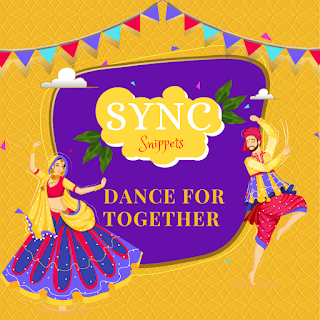Hey reader! Welcome back. In today’s blog, I’d like to share my views about Navratri and Garba!
Sharad Navratri, the nine splendorous and colorful nights, is one of the most awaited Indian festivals. A melodious occasion full of reveling evenings, Navratri is celebrated for ten days, beginning with holy Navratri and ending with Dusshera, Sharad Navratri, a medley of dance, fun, festivities, bonhomie, and religious devotion.
Where the Navratri days have devotees across different cultures of India, its significance amplifies in the states of Gujarat, Maharashtra, and Rajasthan, where Navratri is not only an ode to the feminine divinity but also an occasion of enthusiastic merriment combined with revelry. The Navratri nights here are a colorful melange of religious rituals and endless rounds of cultural dance and music.
Garba, Raas, and Dandiya are popular folk dances that rule the revelry- with these energetic dance forms, Navratri has spread its innate charm to the world.
Garba – the Cultural Dance Form
The dance form most closely associated with Navratri is Garba; divinity (in the form of the Goddess or Devi) resides. Garba is danced around this symbol to honor the fact that all humans have the divine energy of Devi within them. Today, it is common to have images of Durga at the center of the circle in lieu of the garbha deep.
Garba is performed in a circle (concentric circles when there are many people). The circle represents the Hindu view of time. In Hinduism, time is cyclical. As the cycle of time revolves, from birth to life to death to rebirth, the only thing that is constant is the Goddess, an unmoving symbol in the midst of all of this unending and infinite movement. The dance symbolizes that God, represented in feminine form in this case, is the only thing that remains unchanging in a constantly changing universe (jagat).
As garba is part of a religious practice, as with other Hindu rituals and worship, it is done barefoot (and on all kinds of surfaces). Going barefoot signifies respect for the earth upon which people walk. The foot is the body part that touches the earth – the sacred mother of all. The earth is imbued with generative powers and the foot is thought of as the conduit through which the vital energy of the earth travels through humans. Dancing barefoot is another way to connect with Devi.
Now you know the meaning behind Garba. It is also the folk dance of Gujarat and a pious dedication to the feminine power of giving birth thus, keeping the cycle of life alive. The word Garba comes from the Gujarati colloquial usage – Garbo – which means ‘Garbh’ (in Sanskrit) – which means, Womb.
A Garbha Deep – a small earthen lamp –holds the center of the open ground of festivities – along with an idol of the Goddess. Garba executes in a circle formation by women and menfolk of the community around the holy Garbha lantern.
This beautiful symbolism signifies that the whole human civilization revolves around the central premise of fertility, the female ability to give birth, and thus running the entire life cycle.
For all nine nights, there are communal (community) feasts and dancing programs. After the evening pooja/ worship, people gather in open areas, their community areas/ plots, roads, etc., where they dance together to the foot-tapping beats of traditional Garba/ Dandiya music. Many formal evenings and Navratri events are organized all over the cities, where people go in hoards to participate and dance.
This is all for today, I hope you got some meaningful understanding from today’s blog. Thank you for your precious time, See you in the next blog 😊.
Aryan Veerwani (Team SYNC)





Insightful information
ReplyDeleteWell penned!💯
ReplyDelete